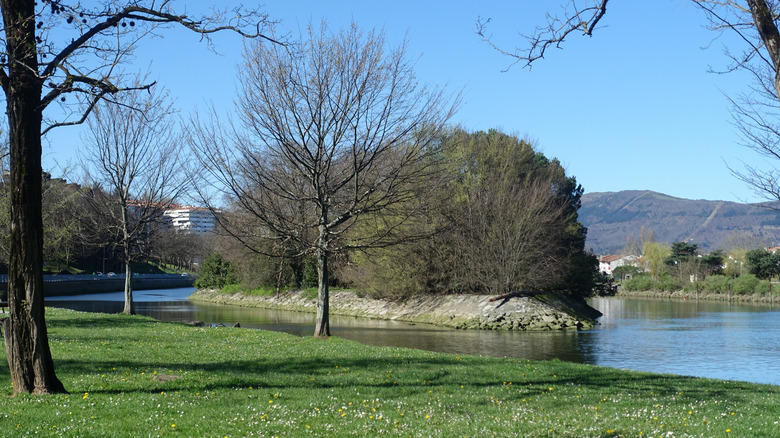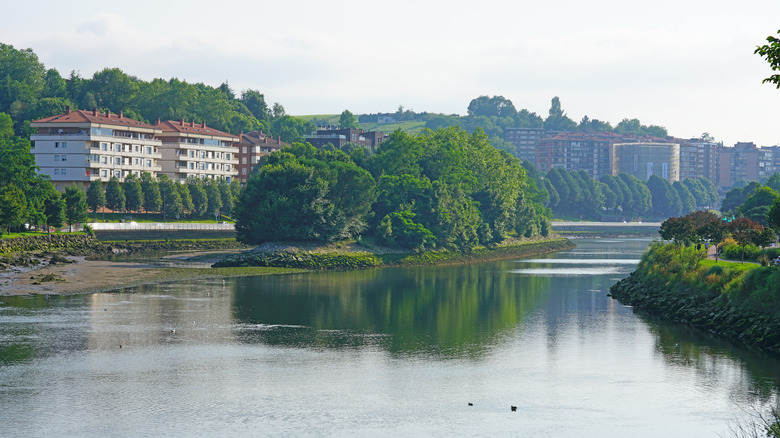Tucked Between Spain And France Is A Tiny Uninhabited Island That Changes Nationalities Throughout The Year
There are a number of unique and intriguing borders across Europe, but head to the Basque Country — a haven for food, wine, and art lovers — and you'll find a tiny island on the border between Spain and France. Just 224 meters (735 feet) long and 41 meters (135 feet) wide, Pheasant Island is a truly fascinating place: The island changes nationality every six months.
Pheasant Island is located in the Bidasoa River, between the cities of Hendaye in France and Irun in Spain. It is 10 meters (33 feet) from the Spanish riverbank and 20 meters (66 feet) from the French side. It covers just two acres and is uninhabited. The island today has three names: In Spanish, it's called Isla de los Faisanes, in French, Île des Faisans, and in Basque, Faisai Uhartea. Despite its name, there are no pheasants on Pheasant Island — something the author Victor Hugo remarked upon with disappointment following his visit in 1843.
The closest airport is San Sebastian Airport in Spain. This is the main airport for the foodie paradise city of San Sebastian, and it's about a 10-minute drive from the airport to Pheasant Island. Across the border in France, you'll find the vibrant seaside town of Biarritz. Biarritz Airport is just a 21-minute drive away from Pheasant Island. It's possible to reach the island by public transport, too. You can take Bus 4 from Hendaye train station, followed by a short seven-minute walk, to reach the French side; take bus L1 from Irun station and then walk four minutes to get to the Spanish side. Unfortunately, visitors are rarely allowed on the island itself. Access on the bi-annual handover days is limited to diplomatic and military officials, so your best bet is to join an infrequent heritage tour.
The history of Pheasant Island
Pheasant Island is Spanish from 1 February to 31 July each year, then ruled by France from 1 August to 31 January. The tiny strip of land holds the remarkable title of the world's smallest condominium (a place with more than one sovereign state). The island's history as a neutral space enabled this unusual arrangement.
After the ceasefire of 1648 that ended the Thirty Years' War, Pheasant Island was chosen as the setting for peace talks — 24 conferences were held on the island. In 1659, the Treaty of the Pyrenees was signed; a monolith on the island commemorates this treaty. The side of the monolith that faces Spain has inscriptions in Spanish, while the side of the monolith that faces France has writing in French. In 1660, the island hosted a royal wedding. King Louis XIV of France married the daughter of King Philip IV, Maria Theresa of Spain, on the island itself — cementing the location as one of peace and unity between the two countries. With its unusual history and a one-of-a-kind position between France and Spain, Pheasant Island is an extraordinary place to discover.

